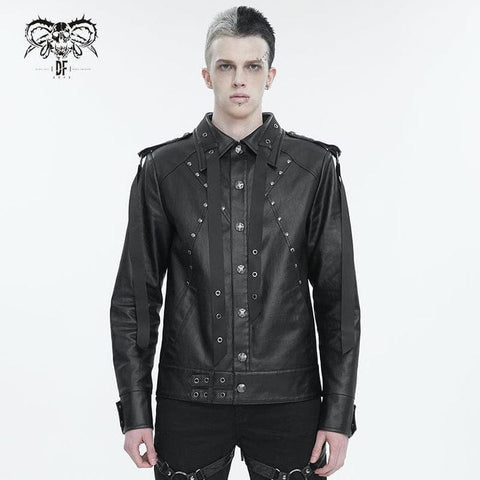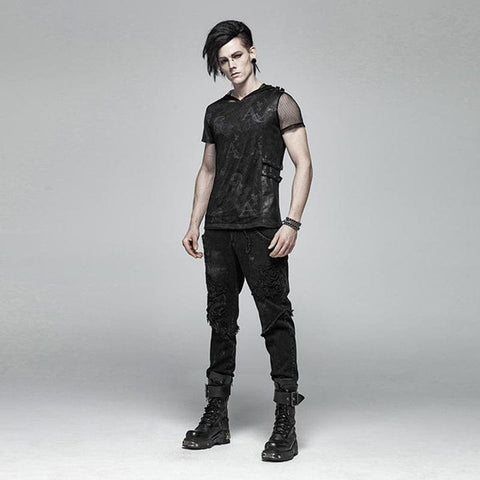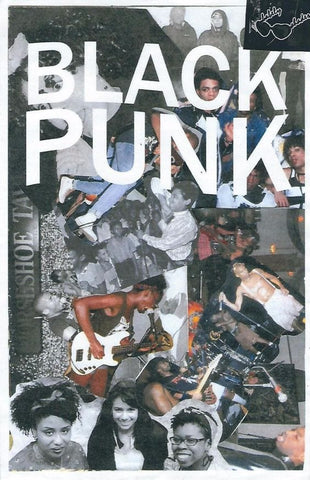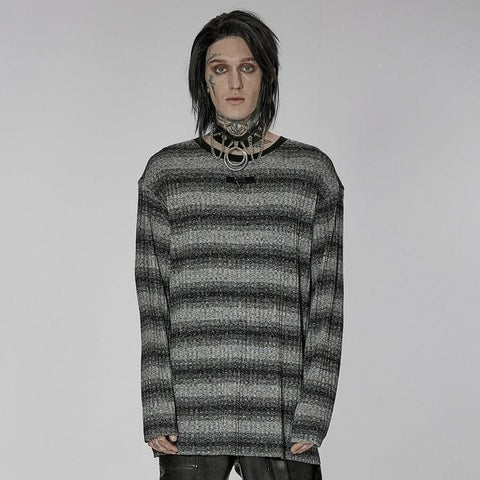In music, few genres have captured the essence of counterculture and rebellion, quite like punk and grunge. These two distinctive movements emerged in different eras, resonating with disaffected youth seeking an outlet for their frustration and disillusionment. While both genres share a raw, unapologetic energy and a disdain for conformity, they possess subtle yet significant differences that set them apart. Join Punk Design on this fascinating journey to better understand punk and grunge!
What is the Origins of Punk and Grunge?
Punk and grunge are two influential music genres that emerged during different periods but share common themes of rebellion and a counter-cultural attitude. Let's delve into their origins and historical context.
The Origins and Historical Context of Punk
Punk rock emerged in the mid-1970s, primarily in the United States and the United Kingdom. It was a direct response to mainstream music's perceived stagnation and commercialization, particularly the bloated and extravagant nature of the rock music scene at the time. Punk was a rebellion against society's established norms and values, expressing a raw and aggressive energy.
In the United States, punk rock found its roots in cities like New York and Los Angeles. Punk bands such as The Ramones and The New York Dolls shaped early pop-punk songs. The musical style is short, fast-paced songs with simple chord progressions, aggressive guitar riffs, and energetic performances. The metal bands used different guitars to express their style. Meanwhile, in the United Kingdom, punk took on a different flavor. Bands like the Sex Pistols, The Clash, and the Buzzcocks became synonymous with the British punk movement. The UK punk scene was marked by a DIY (do-it-yourself) ethos, with punk bands forming their labels, creating artwork, and organizing their shows.
Punk's rebellious spirit extended beyond the music itself. It was a cultural movement that rejected mainstream society and sought to challenge societal norms and political establishments. Punk fashion, with its band T-shirts, leather jackets, ripped jeans, and skull rings, became an iconic symbol of the punk subculture.
The Origins and Historical Context of Grunge
Grunge, also known as the Seattle Sound, emerged in the late 1980s in Seattle, Washington. It was heavily influenced by punk style, alternative rock, and heavy metal. Grunge's music incorporated elements of punk's rawness and aggression while infusing it with a more introspective and melancholic tone. Seattle's role in the grunge movement was crucial. The city's isolation from major music industry hubs allowed for a distinct local music scene to flourish.
Grunge songs often dealt with themes of alienation, disillusionment, and social unrest. The music had a gritty and unpolished sound, characterized by distorted guitars, anguished vocals, and a sense of emotional intensity. Grunge's look was characterized by combat boots, ripped jeans, and a general disheveled appearance.
The grunge musicians like Nirvana and Pearl Jam in the early 1990s propelled grunge into the global spotlight. However, the commercialization and media attention eventually led to the decline of the grunge movement, with many bands disbanding or moving in different musical directions.
The Ideology and Attitude
Punk and grunge are two distinct musical genres and cultural movements that emerged in different periods but share certain similarities in their ideologies and attitudes.
Punk
Punk music and culture expressed a strong opposition to the established social and political systems. The punk rockers often addressed issues such as political corruption, inequality, war, and social injustice through their music. They rejected the mainstream and sought to create a counter-culture that challenged the existing power structures.
Punk rejected traditional societal norms and questioned the authority of institutions and figures of power. It encouraged rebellion against conformity, advocating for individual freedom and self-expression. Punk, characterized by ripped vests, leather jackets, and distinctive hairstyles, was a deliberate rejection of mainstream fashion trends.
Punk fostered a do-it-yourself (DIY) ethos, emphasizing the importance of self-reliance and independent thinking. This included self-producing music, creating zines (small self-published magazines), and organizing grassroots shows and festivals. Punk encouraged individuals to express themselves authentically, embracing their uniqueness and rejecting societal pressures.
Grunge
Grunge music often conveyed a sense of apathy and disillusionment with the world. It reflected the frustration and disenchantment of the younger generation, particularly about mainstream culture, commercialization, and social issues. Grunge songs often explored themes of alienation, depression, and existential angst.
Grunge rejected the glossy and manufactured image of mainstream music at the time. It sought to distance itself from the polished and commercialized sound of the 1980s, instead embracing a more raw and authentic approach. Grunge bands aimed to create a genuine connection with their audience by expressing a generation's struggles and disillusionment.
While punk had a robust political agenda, grunge was more introspective and focused on personal emotions and experiences. Grunge's lyrics often tackled themes of depression, addiction, and social isolation, reflecting the internal struggles of individuals rather than explicitly addressing political or societal issues.
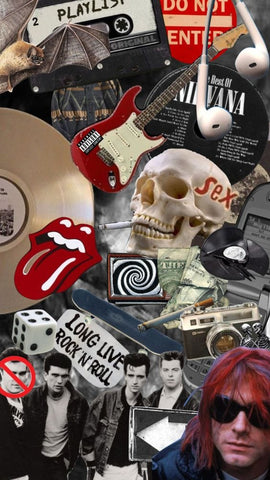
What is the Difference Between Punk and Grunge in Fashion Style?
Both punk and grunge are alternative fashion styles that emerged in different eras and carry distinct characteristics. While both styles are associated with rebellion and nonconformity, they differ in terms of aesthetics, attitude, and influence.
Punk Fashion
Punk fashion is characterized by its outlandish and rebellious nature. It incorporates various iconic elements that have become synonymous with the style. Leather jackets, studded vests, and band T-shirts are everyday staples. These items are often adorned with patches, pins, and buttons, showcasing the wearer's musical and ideological preferences.
The do-it-yourself (DIY) aspect is integral to punk fashion. Punks often customize their clothing, creating a unique and personalized look. Ripped shirts, safety pins, and band patches are popular DIY techniques. The aim is to reject the mass-produced, homogeneous fashion of the mainstream and instead showcase individuality and creativity.
Punk fashion embraces bold and aggressive styling choices. It favors darker colors, such as black, and incorporates elements like spikes, chains, and skull necklaces. The aim is to create a visually striking and confrontational appearance that challenges societal norms.
Grunge Fashion
Grunge fashion reflects a more casual and disheveled appearance, often influenced by the idea of anti-fashion. It prioritizes comfort and a laid-back attitude. Oversized plaid shirts, baggy sweaters, and distressed jeans are key components. The style often incorporates layering, with multiple garments worn together to achieve a relaxed and effortless aesthetic.
Grunge clothing takes a minimalist approach, favoring simplicity over elaborate designs. The emphasis is on functionality and comfort rather than on high fashion or luxury. The clothing is often worn and tattered, with ripped jeans and worn-out sneakers being popular choices.
The grunge style embraces a deliberately unkempt appearance. It may involve combining contrasting patterns, such as plaid and floral prints, or mixing different textures. The aim is to create a nonchalant and disheveled style that rejects the polished and put-together looks of mainstream fashion.
Different Cultural Impact and Legacy
Punk and grunge subcultures have made significant cultural impacts and left enduring legacies, although they emerged from distinct movements.
Punk
Punk challenged societal norms and rejected the conformity of mainstream culture. It embodied a spirit of rebellion and individualism, encouraging people to question authority and think critically. This ethos of subversion has had a lasting impact on art, inspiring artists to push boundaries, challenge the status quo, and express themselves freely.
Punk provided a platform for marginalized voices and fostered a sense of inclusivity. It brought together people from diverse backgrounds, transcending barriers of race, class, and gender. Punk became a space where individuals could express their frustrations, experiences, and aspirations, leading to the formation of subgenres like riot grrrl, queercore, and Afro-punk. This cultural fusion and emphasis on diversity have had a profound impact on the broader cultural landscape.
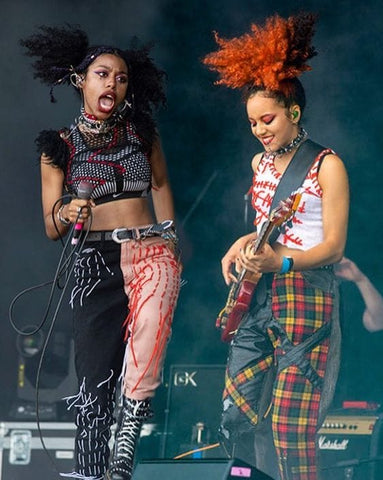
Grunge
Grunge embodied a sense of disillusionment and cynicism that resonated with a generation of young people. It rejects the materialism and superficiality of mainstream culture. The music and lyrics often dealt with themes of alienation, depression, and social issues, reflecting the angst and frustration of the era.
Grunge left a lasting impact on the music industry and popular culture. Its influence can be heard in subsequent alternative rock, post-grunge, and indie rock bands. The grunge movement also influenced other forms of media, including film, television, and literature. Films like "Singles" and "Reality Bites" captured the spirit of the era and featured grunge music prominently. The death of Nirvana frontman Kurt Cobain in 1994 further cemented the mythos surrounding grunge and added a tragic element to its legacy.

Punk, with its aggressive and political nature, is associated with bold and provocative attire, reflecting its confrontational ethos. On the other hand, grunge, with its more introspective and apathetic vibe, embraces a laid-back and disheveled fashion aesthetic. No matter which style you lean towards, punk and grunge remain timeless expressions of the counterculture that continue to inspire and influence fashion and music today.
Punk Design understands the significance of these subcultural styles and offers a wide range of punk and grunge clothing options to cater to diverse tastes. Whether you resonate with the raw energy of punk or prefer the laid-back vibes of grunge, we have you covered!

